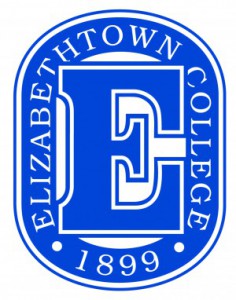 The Saltine Warrior became Syracuse University’s mascot in 1931 after remains of a 16th-century Onondaga Indian chief were excavated from a campus building. The warrior later was nicknamed Big Chief Bill Orange. In 1951, a statue was resurrected in the heavily trafficked sports stadium.
The Saltine Warrior became Syracuse University’s mascot in 1931 after remains of a 16th-century Onondaga Indian chief were excavated from a campus building. The warrior later was nicknamed Big Chief Bill Orange. In 1951, a statue was resurrected in the heavily trafficked sports stadium.
Dr. Michael Taylor, assistant professor of anthropology and Native American studies at Colgate University, Hamilton, N.Y., and a member of the Seneca Nation’s Wolf Clan further researched this topic. As a doctoral student at Syracuse, Taylor first explored the history of the institution and learned about the previous mascots of the Orange Men. He discovered the school once was associated with the Onondaga Nation, a sovereign Native American community only 10 minutes from the Syracuse campus.
At 7:30 p.m. Tuesday, Nov. 5, Taylor speaks on “Washington Redskins to the Tomahawk Chop: What’s wrong with Indians as sports mascot?” His talk, in Gibble Auditorium, focuses on national media coverage of the Redskins professional football team and other Native American sports mascots and references his recently published book, “Contesting Constructed Indian-ness: The Intersection of the Frontier, Masculinity, and Whiteness in Native American Mascot Representations.”
Though the National Collegiate Athletic Association (NCAA) created a law, in 2005, that restricts team usage of Indian mascots, Syracuse’s mascot change was not a result of this ruling. Dr. Robert Wheelersburg, associate professor of anthropology at Elizabethtown College, said “The NCAA ruled against using faceless, nameless Indians as mascots. Teams need to be named after a tribe. The team needs to get approval from the tribe to use their name and face.” As of now, Wheelersburg said, the same regulation is not enforced at the high school or professional athletic level. Pennsylvania, he noted, currently is fighting to change such rulings in the state.
Most often when people first see the image of an Indian, it’s in pop culture, through sports and mascot stereotypes…”
American Indian rights activist Suzan Shown Harjo spoke at Elizabethtown College in the early 1990s, Wheelersburg said. As a resident of Washington, D.C., and an American Indian, herself, she was appalled by the local professional football team’s use of the Redskins mascot. Her presentation was rash and straight to the point. She compared African Americans being called Negros, to the Redskins’ level of derogation for Indians. Her examples hit home with the audience. Harjo continues to be an activist for the change in the Washington Redskins name.
Dr. Taylor said that the Oneida Nation currently, is running a promotion regarding usage of the Redskin slur and the history behind the term. It is expected that the media campaign will continue through the football season, with people protesting at home and away games. “Some are buying radio air time for commercials,” Taylor said. “Some voices are being vocal at the regional level. Some are reaching national level.” Othere, he said, don’t want to upset the status quo.
“Less than one percent of the U.S. population (is) Indians,” Taylor said. “Most often when people first see the image of an Indian, it’s in pop culture, through sports and mascot stereotypes. It’s Indian-ness representation.” Taylor further commented that athletic mascots use the image of an Indian male, as either the ignoble or noble savage. “The noble savage is romanticized as a friendly helper, while the ignoble savage is more ‘villainized’. It’s the good and bad Indian condensed in the forms of mascots,” Taylor said.
Because several local high schools continue to use the images of Indians as their mascot, Wheelersburg invited a local superintendent to attend Taylor’s presentation. The individual declined to attend the event with no further comment.

